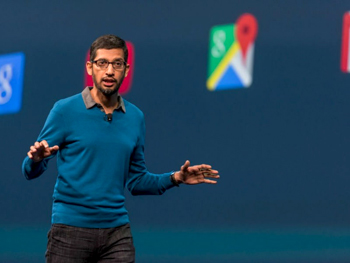New Delhi, Jan 4: Google CEO Sundar Pichai is all set to address domestic technology market with a focus on small and medium businesses on Wednesday.
 Union Minister for Information Technology Ravi Shankar Prasad will join Pichai and other senior leaders from Google, which is expected to begin at 11 am.
Union Minister for Information Technology Ravi Shankar Prasad will join Pichai and other senior leaders from Google, which is expected to begin at 11 am.
At the event, Pichai is expected to make announcements regarding the company's new initiatives aimed at helping the digital operations of small and medium business enterprises.
"Small and medium businesses are the backbone of the Indian economy and are powering the next wave of the country's growth. At Google, we are excited about partnering with businesses to help them unlock exponential growth through the power of digital," Google said in an invitation.
The invite for the event hints that it will also be attended by entrepreneurs and businessmen.
"We invite you to join senior leaders from Google, the industry and business owners like yourselves, as we shine the spotlight on the Indian SMB ecosystem and delve into how digital can be a game changer for your business," the notes on the invite read.
Google has been aggressively focussing on the Indian market over the last few years. With products like Google for Business and a new Cloud region, the company is betting big on tapping into the multi-million dollar opportunity in India. Its products compete with those from the stables of global giants like Microsoft and Amazon Web Services.
Seven Indian startups recently joined the third batch of Google “Launchpad Accelerator” — a platform which brings together mentors and experts from Google and outside to help the startups see success — along with startups from other countries.
Over the last one year, 13 Indian startups have participated in the programme and some of them have successfully raised funding.
Pichai, who is on his first official trip to India after taking over as Google CEO, will visit his alma mater, Indian Institute of Technology, Kharagpur on Thursday morning.





Comments
Add new comment